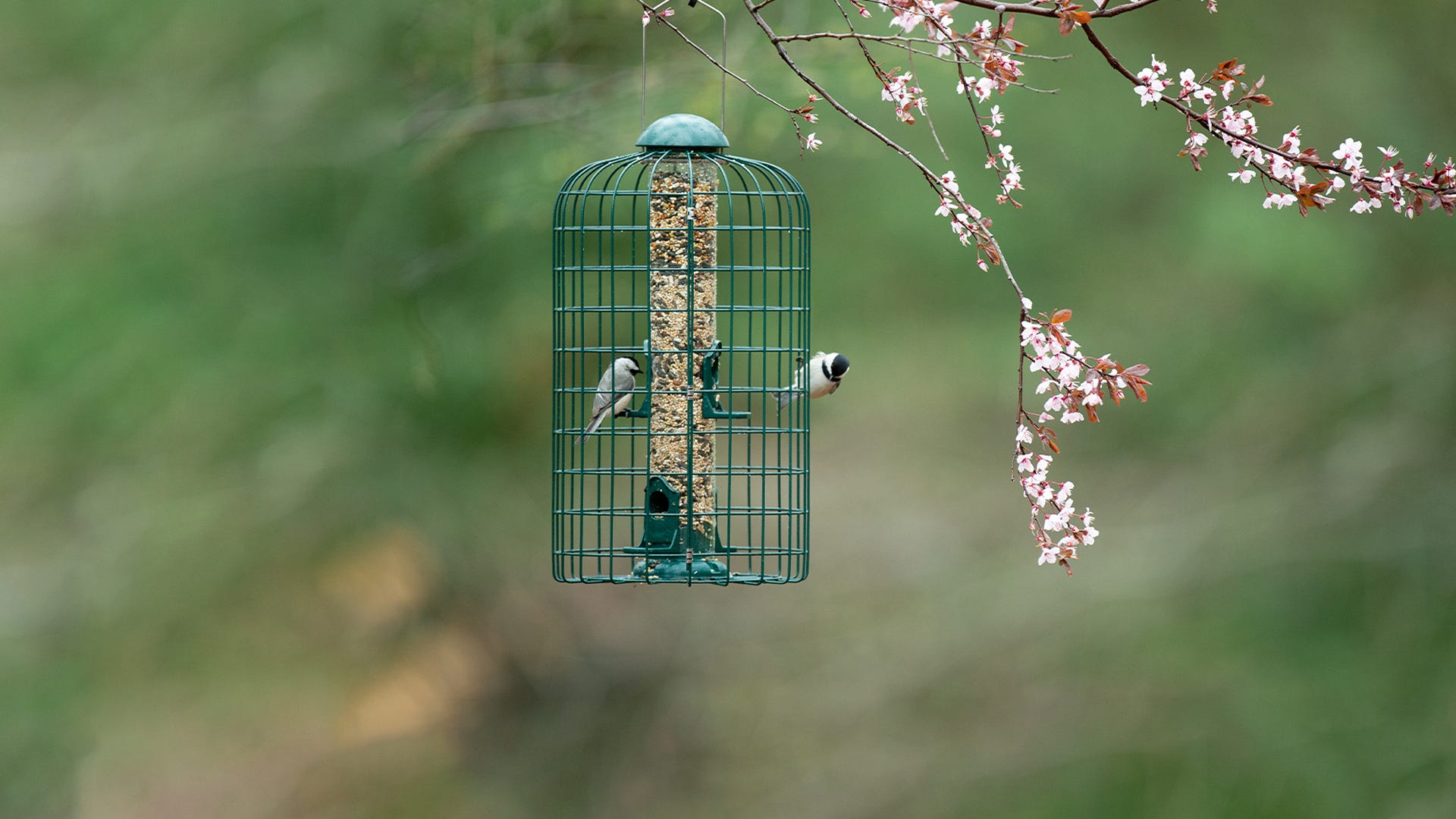There’s a general rule to bird feeding: The more various the food and feeders, the more various the birds you’ll attract. Consequently, few backyard bird lovers settle for one type of food or one type of feeder.
What Is a Caged Bird Feeder?
See also: How to Successfully Squirrel-Proof Your Bird Feeders
Why Use a Caged Bird Feeder?
In addition to keeping bully birds with insatiable appetites away from feeders, caged bird feeders offer other benefits in the yard, including…
1. Keeping squirrels, raccoons, and other feeder pests away from the seed
Smaller guests, such as chipmunks, can still get through most caged feeders. Larger animals, including deer, will not be able to easily reach the food through the mesh.
2. Minimizing wasted seed
Larger birds often kick out a lot of seed from feeder, spilling it on the ground and attracting even larger flocks of bully birds to the feeding area. Smaller birds are often neater as they eat, and less seed will be spilled from caged feeders.
See also: 4 Reasons to Have a Seed Tray Under Your Bird Feeder3. Providing extra perches for waiting birds
Many small birds that will easily visit caged feeders travel in flocks. The cage barrier can serve as extra perches as they wait for a feeding port to become available.
4. Keeping seed protected from rain and snow
Many caged feeders have a dome-like cover, which helps keep the feeder and feeding space below clean and dry. This minimizes seed spoilage and helps birds feed more comfortably in all weather conditions.
5. Preventing accumulation of spilled seed
Because the mesh of a caged bird feeder is open, any spilled seed or discarded hulls will easily fall through the mesh onto the ground, rather than building up and rotting. This helps keep the feeding area cleaner and healthier for birds and other wildlife.
Birds That Can Use Caged Feeders

While larger birds are excluded from caged bird feeders, many smaller birds easily fit through the barrier and can happily visit these feeders. Titmice, goldfinches, nuthatches, chickadees, siskins, and redpolls will all readily use caged bird feeders. Still, it may take a few days for them to become accustomed to the feeder style and flit casually through the mesh. Slightly larger songbirds, such as cardinals, may also use these feeders, depending on the overall mesh size and how confident the birds are in the yard. Larger woodpeckers, like red-bellied woodpeckers, may even perch on the outside of the mesh and use their long, agile tongues to sneak a seed or two, but they will be unable to completely empty the feeder. If bully birds and other unwanted guests are a problem in your yard, caged bird feeders can be a great option to offer a protected, accessible space for smaller birds to feed. Larger birds can still visit other feeders in the yard or will clean up seed spilled from the caged feeder, bringing even more diversity and cooperative feeding to your backyard flock.








